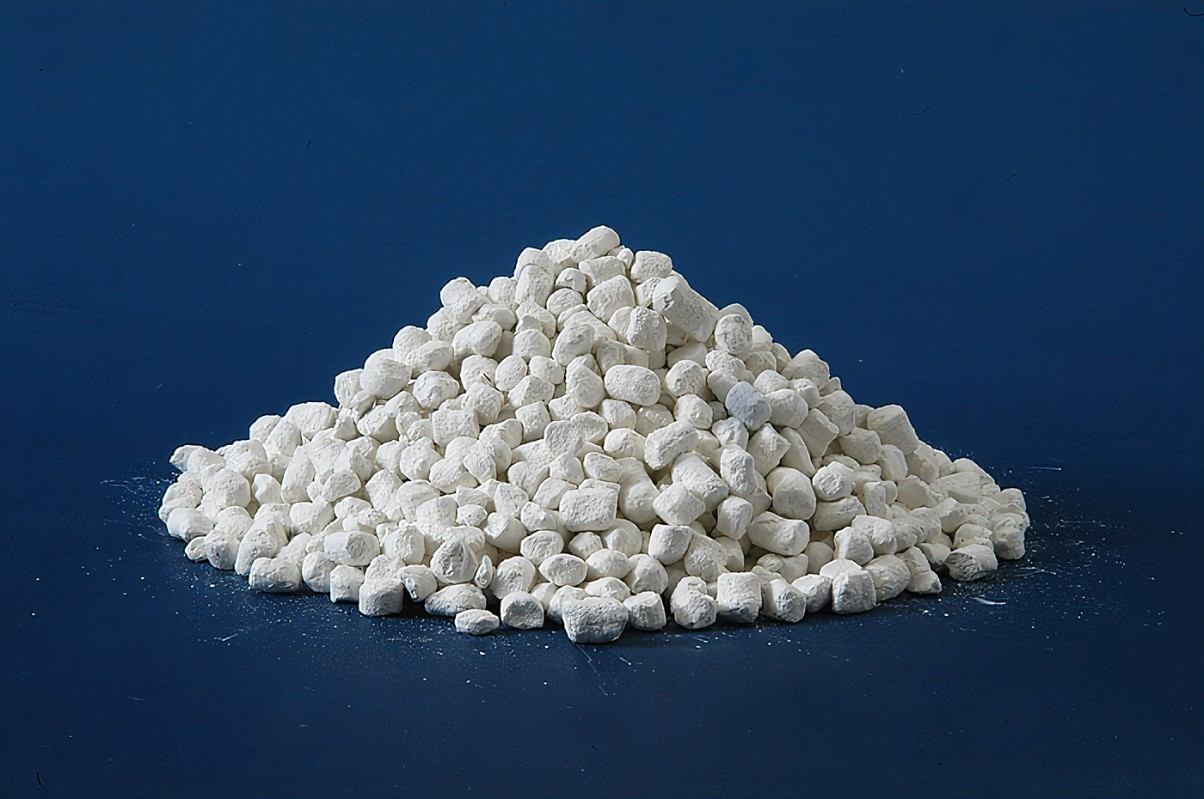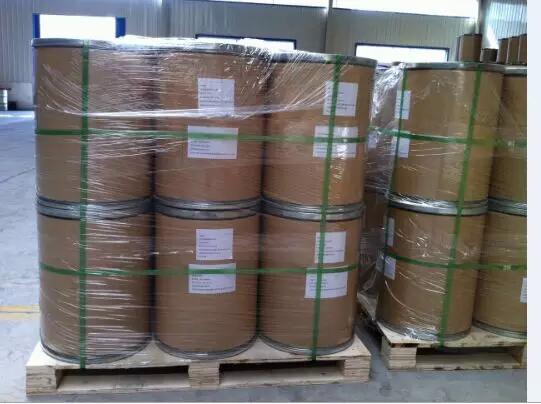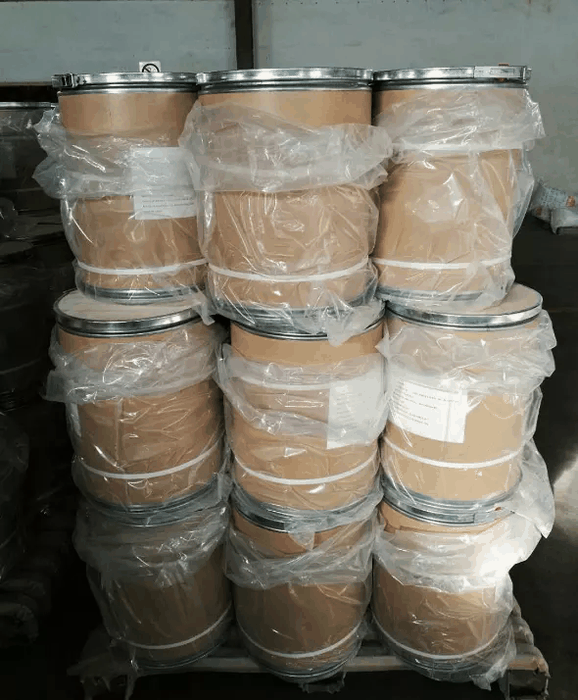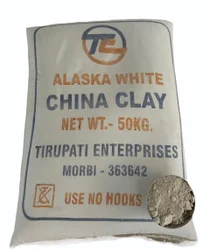KAOLIN
Synonym(s):China clay;Kaolin clay;Hydrated aluminum silicate;Aluminum silicate hydroxide;Bolus
- CAS NO.:1332-58-7
- Empirical Formula: H2Al2O8Si2.H2O
- Molecular Weight: 258.16
- MDL number: MFCD00062311
- EINECS: 310-194-1
- SAFETY DATA SHEET (SDS)
- Update Date: 2025-12-17 09:49:57

What is KAOLIN?
Description
Kaolin or china clay is a naturally occurring, almost white, hydrated aluminum silicate. This material does not exhibit a high degree of slip. Kaolin boasts good absorbency, is dense, and is sometimes used to reduce the bulk densities in loose powder products. It provides a matte surface effect, which can slightly reduce sheen left by some talc products.
Chemical properties
off-white powder
Chemical properties
Kaolin occurs as a white to grayish-white colored, unctuous powder free from gritty particles. It has a characteristic earthy or claylike taste, and when moistened with water it becomes darker in color and develops a claylike odor.
Physical properties
Sericite is a mineral similar to white mica in shape and composition. It has a very fine grain size and a silky shine. This material is soft and smooth and has a slippery feel on the skin. Sericite may be coated with silicone and other treatments for enhanced water repellency and skin adhesion.
Occurrence
Kaolin is a naturally occurring clay that is treated for impurities.
The Uses of KAOLIN
kaolin (China clay) is a mixture of various aluminum silicates. It is often used in powders and masks given its absorbent, abrasive, bulking, and opacifying properties. This white, soft powder has good coverage and absorption abilities for both water and oil, making it an appropriate absorber of the oil and sweat secreted by the skin. It adheres well to the skin’s surface, yet is easily removed with normal cleansing procedures. Kaolin is considered a non-comedogenic raw material.
The Uses of KAOLIN
Adsorbant.
The Uses of KAOLIN
Kaolin has been used:
- For preparing synthetic turbid water that is employed to evaluate the biosorption capacity of Moringa oleifera leaves.
- In combination with carrageenan to induce arthritic inflammation in a rat model for evaluating the activity of JAK3 (janus kinase 3) inhibitors.
- In a study to assess its utility for microparticle-enhanced cultivation (MPEC) of 2-phenylethanol and 6-pentyl-α-pyrone.
Background
Kaolin is a layered silicate mineral. Kaolin is used in ceramics, medicine, coated paper, as a food additive, in toothpaste, as a light diffusing material in white incandescent light bulbs, and in cosmetics. Until the early 1990s it was the active substance of anti-diarrhoea medicine Kaopectate.
Indications
Used for upset stomach and diarrhea, a traditional medicine used in China, South America and Africa. Kaolin is also used to treat AIDs-related diarrhea. Kaolin based bandages are also under investigation.
What are the applications of Application
Kaolin is a hydrated aluminum silicate
Definition
A mixture of clays, quartz, and feldspar usually containing at least 25% alumina. Ball and china clays are ordinarily used. A slip or slurry is formed with water to form a plastic, moldable mass, which is then glazed and fired to a hard, smooth solid.
Production Methods
Kaolin is a hydrated aluminum silicate obtained by mining naturally
occurring mineral deposits. Large deposits are found in Georgia,
USA and in Cornwall, England.
Mined kaolin is powdered and freed of coarse, gritty particles
either by elutriation or by screening. Impurities such as ferric oxide,
calcium carbonate, and magnesium carbonate are removed with an
electromagnet and by treatment with hydrochloric acid and/or
sulfuric acids.
Definition
clay: A fine-grained deposit consistingchiefly of clay minerals. It ischaracteristically plastic and virtuallyimpermeable when wet and crackswhen it dries out. In geology the sizeof the constituent particles is usuallytaken to be less than 1/256 mm. Insoil science clay is regarded as a soilwith particles less than 0.002 mm insize.
Indications
Kaolin is a naturally occurring hydrated aluminum silicate that is prepared for medicinal use as a very finely divided powder. The rationale behind its use in acute nonspecific diarrhea stems from its ability to adsorb some of the bacterial toxins that often cause the condition.
Preparation
The extraction of KAOLIN (china clay) from its deposits is usually performed in three steps: open-pit mining, mineral processing and beneficiation, and drying.
Open-pit operations require the removal of ground overlying the clay (i.e., overburden). The
exposed clay is then mined by a hydraulic mining process, that is, a high-pressure water jet
from a water cannon called a monitor erodes the faces of the pit. This liberates from the
quarry face the china clay, together with sand and mica. The slurry formed flows to the lowest part of the pit or sink, where it is pumped by centrifugal pumps to classifiers, where
coarse silica sand is removed. The silica sand is later reused for landscape rehabilitation. The
remaining suspension of clay is transported by underground pipeline to the mineral-processing and beneficiation plant, where a series of gravity separation techniques are used to
remove particulate materials such as quartz, mica, and feldspars. Sometimes the purified
clay slurry undergoes an additional chemical bleaching process that greatly improves its
whiteness. The refined clay suspension is then filtrated, and the filtration cake with a moisture content of about 25 wt.% passes through a thermal drier fired by natural gas to yield
a final product with 10 wt.% moisture. The end product is normally sold in pelletized form
with a pellet size ranging from 6 to 12 mm.
brand name
Vanclay (Vanderbilt);Biskapect;Chloropect;Collodyne;Diaguard forte;Diastat;Donnagel pg liquid;Donnagel-mb;Donnagel-pg;Enterosan;Fissan;Kaodinnon-narcotic;Kaolin w/pectin;Kaomagma with pectin;Kaomycin;Kaoneo;Kaopectate n;Kaoprompt-h;Kao-spen;Kapetolin;Kc;Kln;Medipect;Noventerol;Parepectolin;Pectrolyte;Peterpect;Streptomagma.
World Health Organization (WHO)
Kaolin, a hydrated aluminium silicate, is an absorbent and has been used to treat diarrhoea because of its ability to bind and inactivate bacterial toxins. However, it has been shown to induce only a slight change in stool consistency and there is no evidence that it can reduce the duration or the severity of diarrhoeal disease. It does not reduce fluid and electrolyte losses. It cannot be recommended in the treatment of diarrhoea.
General Description
Odorless white to yellowish or grayish powder. Contains mainly the clay mineral KAOLINite (Al2O3 SiO2)2 H2O)2), a hydrous aluminosilicate. KAOLINite has mp 740-1785°C and density: 2.65 g cm-3. KAOLINe is insoluble in water but darkens and develops a earthy odor when wet.
Reactivity Profile
KAOLIN is stable and chemically unreactive under ordinary conditions.
Hazard
Respirable fraction; questionable carcinogen.
Pharmaceutical Applications
Kaolin is a naturally occurring mineral used in oral and topical
pharmaceutical formulations.
In oral medicines, kaolin has been used as a diluent in tablet and
capsule formulations; it has also been used as a suspending vehicle.
In topical preparations, sterilized kaolin has been used in poultices
and as a dusting powder. Therapeutically, kaolin has been used in
oral antidiarrheal preparations.
Industrial uses
The name kaolin comes from the two Chinese words kao-ling, meaning high ridge, and was originally a local term used to describe the region from which the clay was obtained. Kaolin (Al2O32SiO22 H2O) usually contains less than 2% alkalies and smaller quantities of iron, lime, magnesia, and titanium. Because of its purity, kaolin has a high fusion point and is the most refractory of all clays. Lone kaolins are widely used in casting sanitaryware, ceramics, and refractories.
Georgia china clay is one of the most uniform kaolins to be found. Generally speaking, there are two types of Georgia-sourced kaolin, both of which are widely used for casting and other processes. One type imparts unusually high strength and plasticity, and is used for both casting and jiggering where a high degree of workability is required. The other type typically is a fractionated, controlled particle size clay that also behaves well in casting, dries uniformly, and reduces cracking of ware.
Pharmacokinetics
Kaolin is an adsorptive agent.
Side Effects
It is almost harmless and is effective in many cases of diarrhea if taken in large enough doses (2–10 g initially, followed by the same amount after every bowel movement). The adsorbents are generally safe, but they may interfere with the absorption of some drugs from the GI tract.
Safety
Kaolin is used in oral and topical pharmaceutical formulations and is generally regarded as an essentially nontoxic and nonirritant material. Oral doses of about 2–6 g of kaolin every 4 hours have been administered in the treatment of diarrhea.
Veterinary Drugs and Treatments
Although its efficacy is in question, kaolin/pectin is used primarily in veterinary medicine as an oral anti-diarrheal agent. It has also been used as an adsorbent agent following the ingestion of certain toxins. Administration may be difficult due to the large volumes that may be necessary to give orally.
Source
Premier-quality deposits of kaolin such as those mined in Cornwall in the United Kingdom, Georgia and the Carolinas in the southe astern United States, and the Amazon Basin of Brazil.
Other suppliers of quality kaolin include France, Germany, the Czech Republic, Malaysia, and Australia.
Metabolism
Not Available
Storage
Kaolin is a stable material. Since it is a naturally occurring material,
kaolin is commonly contaminated with microorganisms such as
Bacillus anthracis, Clostridium tetani, and Clostridium welchii.
However, kaolin may be sterilized by heating at a temperature
greater than 160°C for not less than 1 hour. When moistened with
water, kaolin darkens and becomes plastic.
Kaolin should be stored in a well-closed container in a cool, dry
place.
Incompatibilities
The adsorbent properties of kaolin may influence the absorption of other orally administered drugs. Drugs reportedly affected by kaolin include amoxicillin; ampicillin;cimetidine; digoxin; lincomycin; phenytoin; and tetracycline. Warfarin absorption by rat intestine in vitro was reported not to be affected by kaolin. With clindamycin, the rate (but not the amount) of absorption was affected by kaolin.
Regulatory Status
Accepted in Europe as a food additive in certain applications. Included in the FDA Inactive Ingredients Database (oral capsules, powders, syrups, and tablets; topical preparations). Included in nonparenteral medicines licensed in the UK.
Properties of KAOLIN
| Melting point: | 1750 °C |
| Density | 2,6 g/cm3 |
| refractive index | 1.6200 |
| storage temp. | no restrictions. |
| solubility | Practically insoluble in diethyl ether, ethanol (95%),
water, other organic solvents, cold dilute acids, and solutions of
alkali hydroxides. |
| form | Powder |
| color | 75-96, Hunter Brightness |
| PH | 6-7 (50g/l, H2O, 20℃)(slurry) |
| Water Solubility | insoluble H2O, dilute acids and alkali hydroxides [HAW93] |
| Dielectric constant | 1.8 - 2.8(0.0℃) |
| Stability: | Stable. Substances to be avoided include strong oxidizing agents. |
| InChI | InChI=1S/2Al.O5Si2.2H2O.2O/c;;1-6(2)5-7(3)4;;;;/h;;;2*1H2;;/q2*+1;-2;;;; |
| EPA Substance Registry System | Kaolin (1332-58-7) |
Safety information for KAOLIN
Computed Descriptors for KAOLIN
| InChIKey | NLYAJNPCOHFWQQ-UHFFFAOYSA-N |
| SMILES | [Si](=O)(O[Al]=O)O[Si](=O)O[Al]=O.O.O |
KAOLIN manufacturer
Shivam Minerals & Allied Industries Pvt. Ltd.
New Products
4,4-Difluoropiperidine hydrochloride tert-butyl 9-methoxy-3-azaspiro[5.5]undecane-3-carboxylate Indole Methyl Resin N-Isopropylurea N,N-Dicyclohexylcarbodiimide(DCC) MELDRUMS ACID 5-METHYLISOXAZOLE-4-CARBOXYLIC ACID Magnessium Bis glycinate Zinc ascorbate 1-bromo-2-butyne 2-acetamidophenol 9(10H)-anthracenone Erythrosin B, 4-Piperidinopiperidine 2-((4-morpholinophenylamino) (methylthio) methylene) malononitrile 2,4-dihydroxybenzaldehyde 3-(4-morpholinophenylamino)-5-amino-1H-pyrazole-4-carbonitrile Methyl 2-methylquinoline-6-carboxylate 2,6-dichloro-4-nitropyridine 4-Bromo-2-chlorobenzonitrile 2-(benzylamino)acetic acid hydrochloride 4-(tert-Butoxycarbonylamino)but- 2-ynoic acid 3,4-dihydro-2H-benzo[b][1,4]dioxepine 1-Phenyl-1-cycloprppanecarboxylicacidRelated products of tetrahydrofuran








You may like
-
 Kaolin supplierView Details
Kaolin supplierView Details
1332-58-7 -
 China Clay 99%View Details
China Clay 99%View Details -
 Kaolin 99%View Details
Kaolin 99%View Details -
 Clay Nanopowder CAS 1332-58-7View Details
Clay Nanopowder CAS 1332-58-7View Details
1332-58-7 -
 Kaolin CAS 1332-58-7View Details
Kaolin CAS 1332-58-7View Details
1332-58-7 -
 Kaolin Light extrapure CAS 1332-58-7View Details
Kaolin Light extrapure CAS 1332-58-7View Details
1332-58-7 -
 Powdered China Clay Powder, Packaging Size: 50 kgView Details
Powdered China Clay Powder, Packaging Size: 50 kgView Details
1332-58-7 -
 China Clay Powder, PP Bag, 50 kgView Details
China Clay Powder, PP Bag, 50 kgView Details
1332-58-7
